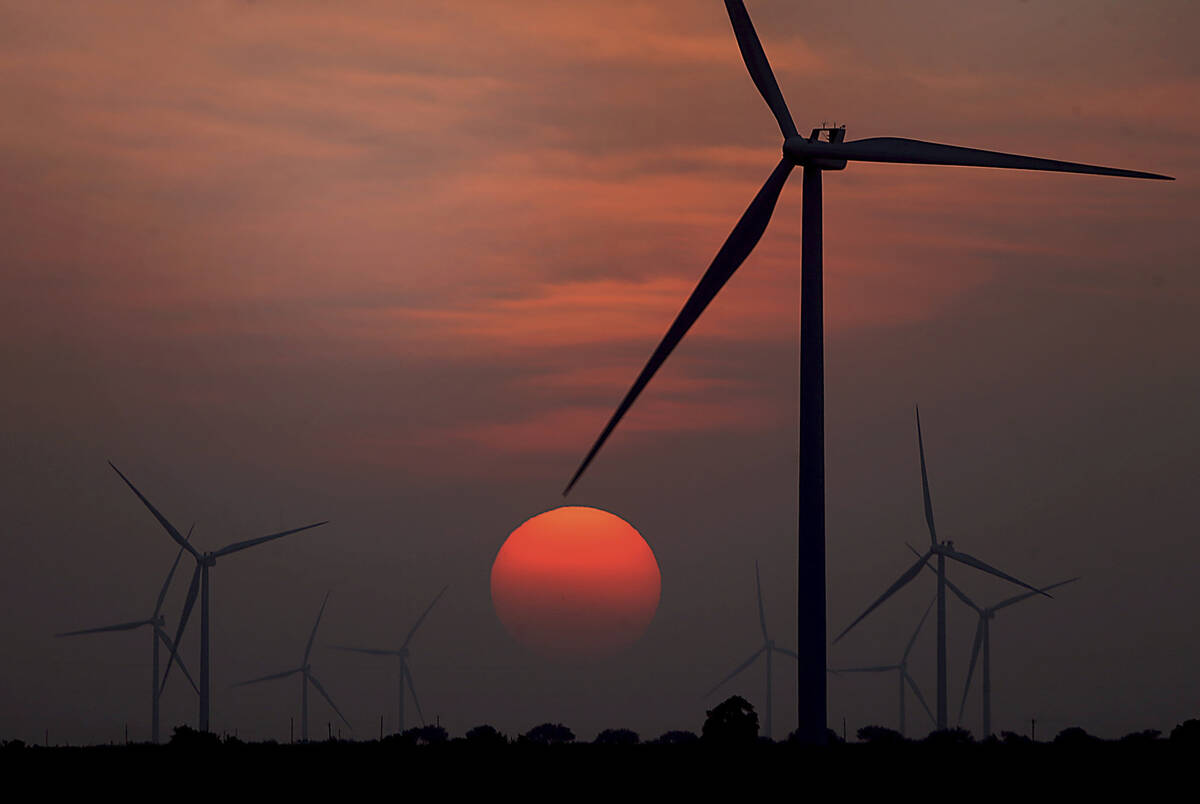COMMENTARY: Climate hysteria isn’t productive
Watching the news, you get the sense that climate change is making the planet unlivable. We are bombarded with images of floods, droughts, storms and wildfires. We see not only the deadly events nearby, we also see far-flung disasters when the pictures are scary enough.
Yet the impression this barrage of catastrophe gives is wildly misleading. It makes it harder to get climate change policy right.
Data show climate-related events such as floods, droughts, storms and wildfires aren’t killing more people. Deaths have dropped precipitously. Over the past decade, climate-related disasters have killed 98 percent fewer people than a century ago.
This should not be surprising because the trend has been evident for many decades, although it rarely gets reported. A century ago, in the 1920s, the average death toll from weather disasters was 485,000 annually. In 1921, the New York Herald headlined its full-page coverage of droughts and famines across Europe with “Deaths for Millions in 1921’s Record Heat Wave.” Since then, almost every decade has seen fewer deaths, with 168,000 average dead yearly in the 1960s and fewer than 9,000 dead each year in the most recent decade, 2014-23.
The 98 percent drop in climate-related deaths is revealed by the most respected international disaster database, which is the gold standard in measuring these effects. It’s reliable because very deadly catastrophes have been documented relatively consistently over the century.
It is true, of course, that smaller events — often with far fewer or no fatalities — are much more likely to have been overlooked in the past because there were fewer people and less advanced technology. That is why some climate campaigners increasingly point to a rise in reported events (rather than the declining death toll) as evidence that climate change is ravaging the planet.
But all of the increase has been in less-serious events, whereas more deadly events are few and declining. The “rise” is because of technology and the global interconnectedness that allows much better reporting of smaller events wherever they take place.
This is clear because the increase is seen in all categories of disasters measured — not only weather disasters but also geophysical disasters like volcanoes and earthquakes, and technological disasters like train derailments. Not even radical climate activists claim that climate change is causing more trains to derail or more volcanoes to explode.
That is why fatalities provide a much more robust measure. These are falling dramatically because richer, resilient societies are much better at protecting citizens than poorer, vulnerable ones. More resources and innovation mean more lives saved. Research shows this consistently across almost all catastrophes, including storms, cold waves and floods.
One much-cited study shows that at the beginning of this century, an average of 3.4 million people experienced coastal flooding with $11 billion in annual damages. Around $13 billion, or 0.05 percent of global GDP, was spent on coastal defenses.
By the end of this century, more people will be in harm’s way, and climate change will raise sea levels several feet. If we do nothing and just keep coastal defenses as they are today, vast areas of the planet will be routinely inundated, flooding 187 million people and causing damage worth $55 trillion annually, costing more than 5 percent of global GDP.
But richer societies will adapt before things get that bad — especially because the cost of adaptation is very low in comparison to the potential damage, at just 0.005 percent of GDP. This sensible adaptation means that despite higher sea levels, fewer people than ever will be flooded. By 2100, 15,000 people will be flooded every year. Even the combined cost of adaptation and climate damages will decrease to just 0.008 percent of GDP.
These facts help show why seeing the bigger picture matters. Linking every disaster to climate change — and wrongly suggesting that things are getting much worse — makes us ignore practical, cost-effective solutions.
Enormously ambitious climate policies costing hundreds of trillions of dollars would cut the number of flooded people by the end of the century from 15,000 to about 10,000 annually. While adaptation saves almost all of the 3.4 million people flooded today, climate policy can, at best, save just 0.005 million.
The calculation is even more stark for poor countries that have few resources and little disaster resilience. Bangladesh (then East Pakistan) suffered the largest recorded global death toll of 300,000 from a hurricane in 1970. Since then, it has developed and improved warning systems and shelters. Over the past decade, hurricane deaths have averaged just 160, almost 2,000 times lower. To help countries achieve fewer disaster deaths, we should promote prosperity, adaptation and resilience.
Of course, weather disasters are just one aspect of climate change, which is a real global challenge that we should fix smartly. But when we are inundated with “weather porn” and miss the fact that deaths have dropped precipitously, we end up focusing on the least effective policies first.
Bjorn Lomborg is the author of “Best Things First,” which The Economist named one of the best books of 2023. He wrote this for InsideSources.com.

















